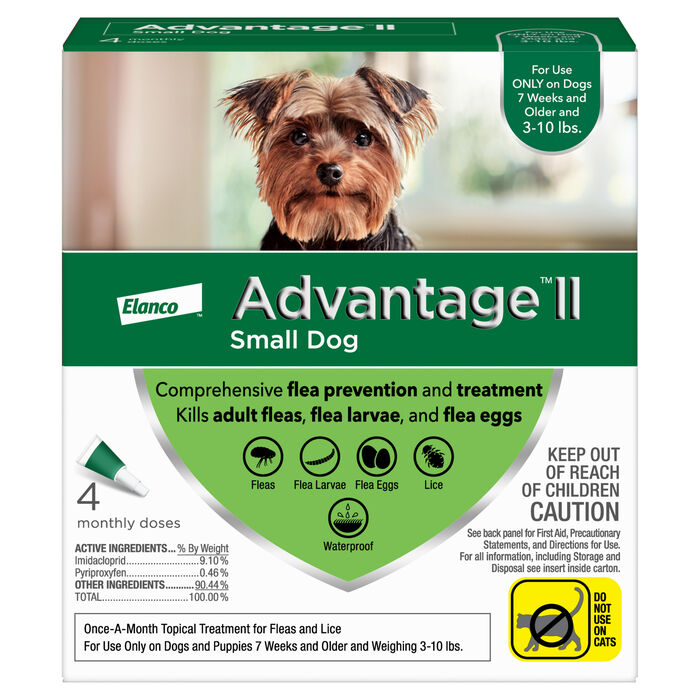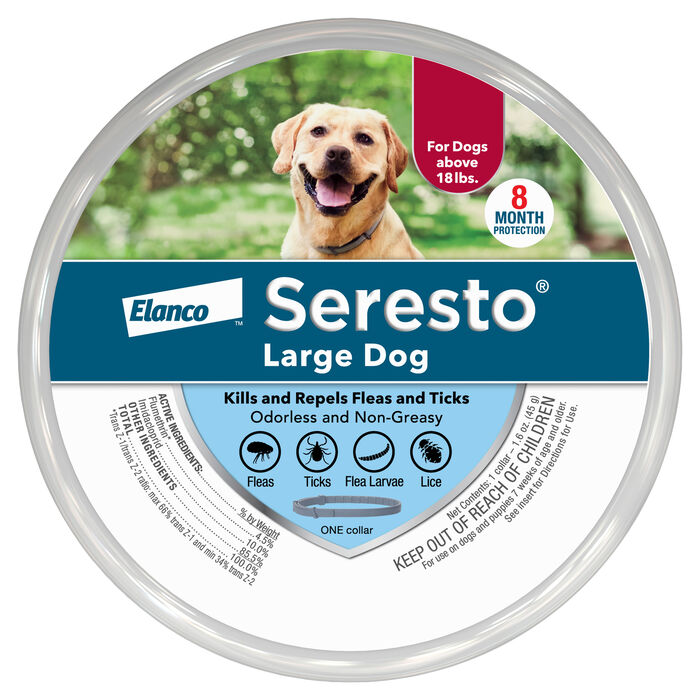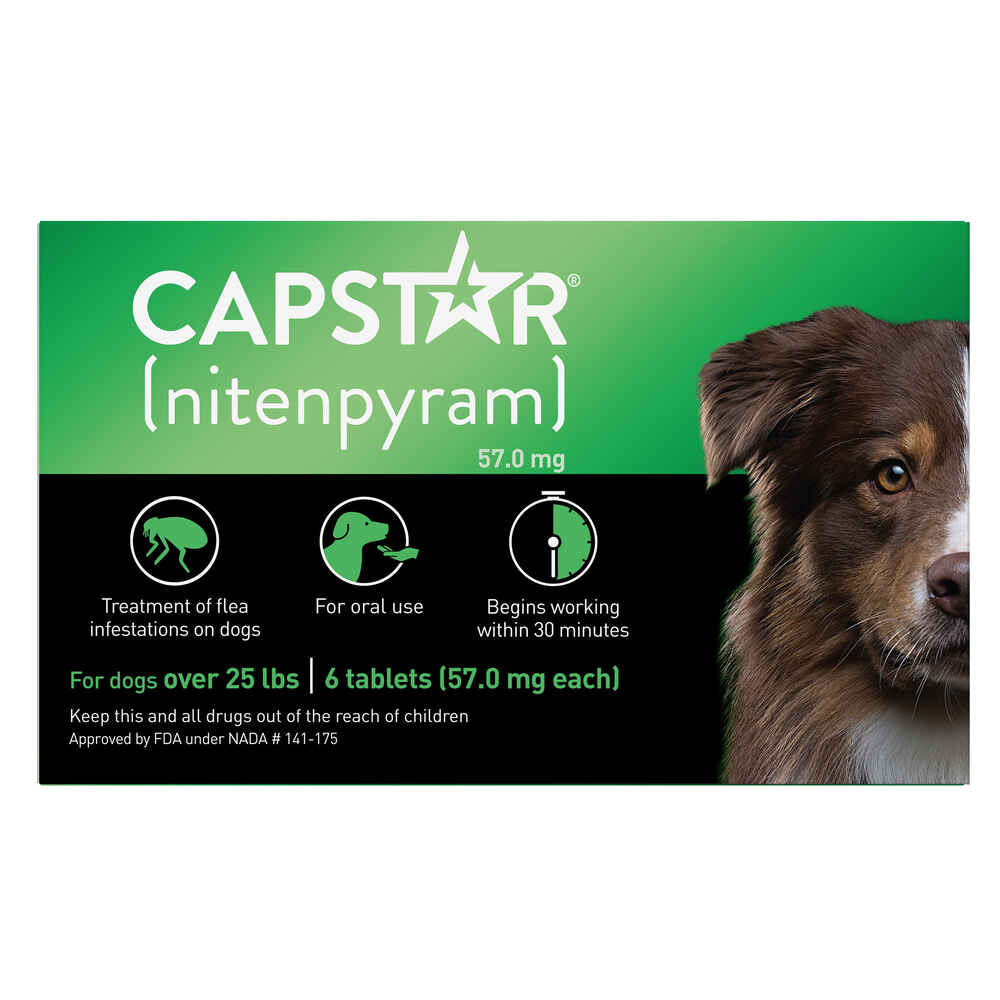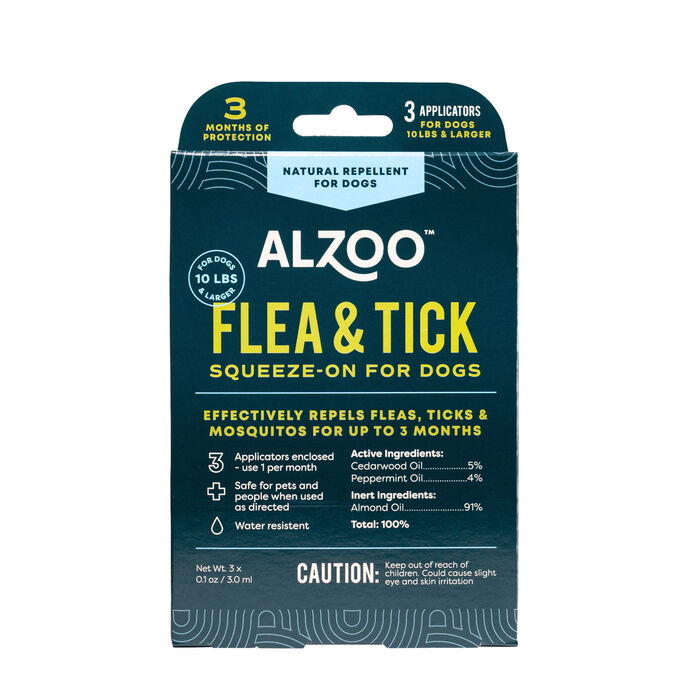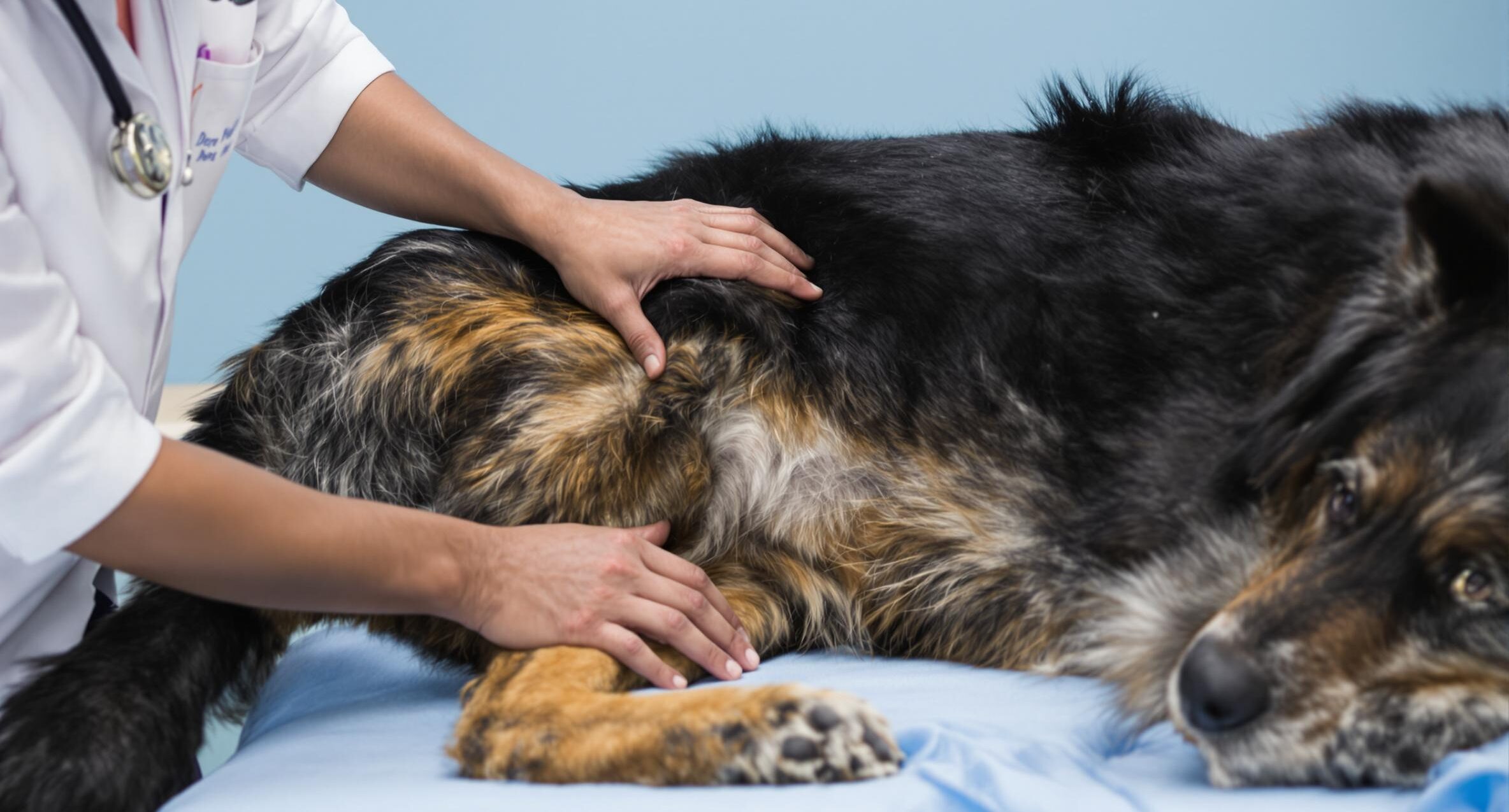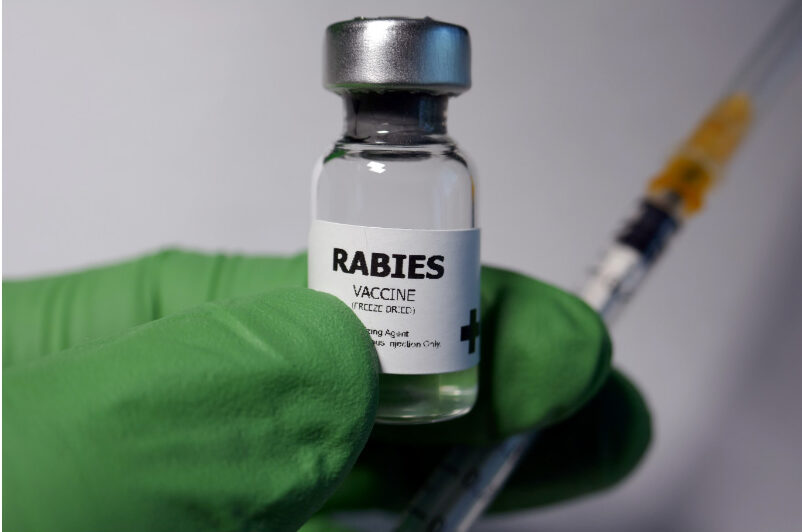Best Flea Medicine for Dogs Without a Vet Prescription

It’s a word every pet parent hates to hear: fleas. For such tiny insects, they can be a pretty huge pain. The bites from these little parasites cause excessive itching and obvious discomfort for your dog, but they can also carry diseases and lead to more serious health concerns.
If your pup has a flea problem, prescription treatments aren’t the only answer. We’ll share some of the best flea medicine for dogs without a vet prescription so you can find the fast, over-the-counter relief your furry friend needs.
Why Flea Prevention Is Important for Dogs
When fleas invade your home, it can be an awful experience. But they are so much more than an itsy-bitsy inconvenience. Like other blood-sucking parasites, they come with some real risks for their hosts.
Health Risks of Fleas
Anyone who’s dealt with a serious flea infestation knows what a nightmare these little pests can be. Their bites don’t just itch, but they can also transmit diseases and infections that pose a serious risk to people and pets alike. Some of the more serious risks of a flea infestation can include:
- Intense itching: With itching comes scratching, and excessive scratching can cause hair loss, sores, and skin infections.
- Allergic reactions: Some dogs develop flea allergy dermatitis, or FAD, which leads to even more severe itching and inflammation.
- Anemia: In extreme cases, because fleas feed on a dog’s blood, they can cause anemia—a decrease in the number of healthy red blood cells.
- Tapeworms: Fleas can be infected with tapeworm larvae. When a dog grooms itself, it can ingest an infected flea and develop a tapeworm infection.
- Disease: Fleas can spread germs and transmit diseases to the humans and animals they bite, including cat scratch disease and flea-borne typhus.
Why Choosing the Right Flea Treatment Matters
Not all flea treatments are created equal. There are various ointments, pills, collars, and sprays that are designed to help, but they can have very different effects.
Some products are only intended to repel fleas but do nothing to kill them once they get on your dog. Others are formulated to kill fleas at every stage of life, while some only affect adults. A topical medication might kill on contact, but for some oral treatments, the flea has to bite the dog to get a deadly dose.
At-home flea-prevention measures will help you avoid higher vet bills in the long run. It’s easier to keep the critters away in the first place than get rid of them, after all. But if you do find yourself with some fleas on your hands (or, rather, on your dog), some over-the-counter treatments might be the answer. To help you find the best relief for your pup, we’ve made a list of the best flea medicine for dogs (without a vet prescription!).
Best Over-the-Counter Flea Medicine for Dogs
When your dog has fleas, they need quick, reliable relief. The best OTC flea medicine for dogs is safe, fast-acting, and easy to use. Whether you’re looking for a plant-based spray or a potent flea collar for long-term protection, we’re here with our top picks.
Advantage II – Flea Prevention Topical for Dogs
Key Features
- Kills fleas, eggs, and larvae for up to 30 days
- Easy to apply and waterproof
- No prescription required
If you need a powerful flea treatment for dogs without a vet prescription, Advantage II has you covered. This monthly topical treatment kills fleas at every stage of their life cycle. It also works on lice!
Why it’s Great for Dogs
The potent formula goes to work within 12 hours, and because it kills on contact, the fleas don’t need to bite your dog to be affected. It’s also fragrance-free and waterproof.
Things to Consider
While Advantage II can tackle fleas and lice, it doesn’t protect against ticks or other parasites.
Seresto Flea & Tick Preventative Collar
Key Features
- Provides long-lasting protection
- Kills fleas on contact
- Adjustable and waterproof
This flea collar is a convenient, low-maintenance way to keep your dog protected for months at a time. It both repels and kills fleas, flea larvae, lice, and ticks. It’s the simple set-it-and-forget-it solution that really works.
Why it’s Great for Dogs
The collar starts working within 24 hours and protects your dog for up to eight continuous months, making it a cost-effective method for both preventing and treating flea problems.
Things to Consider
Some dogs’ skin may be sensitive to the chemicals in the collar. Be sure to check your dog’s neck regularly for redness and ensure a comfortable fit.
Capstar Flea Treatment Tablets
Key Features
- Starts killing fleas within 30 minutes
- Ideal for fast relief
- Unflavored
Capstar’s non-prescription flea treatment offers superior rapid relief. It starts killing fleas within half an hour of ingestion, and more than 90% of the adult fleas die within a few hours.
Why it’s Great for Dogs
The tablets are unflavored, so even the pickiest pups might not even notice a little extra bulk in their favorite treats.
Things to Consider
While it decimates the adult flea population, Capstar doesn’t kill flea eggs or larvae. You may need to combine it with additional flea-prevention measures to tackle more stubborn infestations.
Alzoo Plant-Based Flea & Tick Squeeze-On for Dogs
Key Features
- No synthetic-based pesticides
- Affordable and easy to use
- Protects against fleas, ticks, and mosquitoes
If synthetic chemicals are a no-go, this plant-based flea treatment was made for you! It’s also environmentally friendly and free from synthetic pesticides and repellents.
Why it’s Great for Dogs
This squeeze-on topical treatment is water-resistant and easy to apply. The plant-based formula repels fleas, ticks, and mosquitoes alike.
Things to Consider
This Earth-friendly formula is made to keep pests away, but it won’t kill them. If the fleas make it through your first line of defense, you’ll want to consider a more potent treatment method or talk to your vet.
Do Natural and DIY Flea Remedies Work?
Many chemical-conscious pet owners look to natural, DIY flea treatments as an alternative to over-the-counter or prescription drugs. Some plant-based pest control solutions can help keep your dog flea-free, but it’s important to consult your vet before introducing a new ingredient to your dog’s health regimen.
Here’s what you should know about some popular home remedies:
- Diatomaceous Earth: This is often used as a holistic approach to deterring pests in the home and garden. It can kill fleas and other pests in the environment and can be used to help control fleas in the home, but many veterinarians advise against using it as a topical treatment for pets. Though it’s non-toxic, applying diatomaceous earth on a dog’s skin and coat can cause eye, skin, and respiratory problems.
- Apple Cider Vinegar Spray: Apple cider vinegar doesn’t kill fleas, but the smell might help repel them. It can’t effectively treat a flea infestation. That being said, you can apply diluted apple cider vinegar to your dog’s skin as a flea-prevention method. If an infestation does occur, turn to OTC treatments or talk to your vet.
- Flea Combs: These are useful for removing some fleas from your dog’s coat, but flea combs aren’t a long-term, preventative pest solution. You can use a comb to check your pet’s coat for parasites or use it alongside other treatments to help remove additional living and dead fleas.
The Bottom Line: Natural remedies can help prevent fleas from getting to your dog in the first place, but they usually aren’t strong enough to address an active infestation.
If your dog has a flea problem, you might choose to use home remedies alongside OTC treatments to help them find relief faster, but they shouldn’t be your only line of defense.
When to See a Veterinarian
Flea infestations are more than uncomfortable; they can pose a serious health risk to your furry friend. In some cases, professional medical attention is the best move. You should see a vet if your dog:
- Has severe itching that does not go away after using OTC flea treatment
- Shows symptoms of a flea allergy, such as skin redness and inflammation
- Shows signs of anemia, such as fatigue, weakness, and pale gums
- Has an adverse reaction to flea treatments, like vomiting or excessive drooling
What if over-the-counter treatments aren’t working?
Unfortunately, OTC treatments aren’t effective against all strains of fleas. In these cases, prescription medications are your best bet. If you’ve tried to treat your dog with non-prescription medication at home and the infestation persists, ask your vet about stronger treatment options.
If you have a dog with a severe infestation, it’s best to skip the step of OTC treatment and go straight to the veterinarian.
Final Thoughts
At the end of the day, prevention is the best medicine. It’s always cheaper and easier to defend against fleas than it is to treat a full-blown insect invasion. But if you find yourself faced with a flea infestation, you don’t always need a prescription to help your dog find relief. In many cases, over-the-counter treatments are an affordable, practical solution for most pet owners.
When choosing the best flea medicine for dogs without a vet prescription, look for effective, reliable treatment options that can get the job done fast. Of course, there are certain situations when OTC meds just won’t cut it. Always monitor your dog’s symptoms and behavior when treating them for fleas, and call your vet with any concerns.
As pet lovers, we know you put your dog’s health first. With a little mindful preparation, prevention, and the best OTC treatments, you can help them stay happy, healthy, and parasite-free for years to come!


